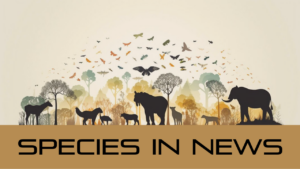Font size:
Print
Sturgeon Fishes are Facing Severe Poaching in the Lower Danube River
Context:
Sturgeon, among the world’s most endangered fish, are being heavily poached and trafficked in the Lower Danube, their last stronghold, according to a report by the World-Wide Fund for Nature (WWF).

Key Findings:
-
- Bulgaria: 144 incidents, with 988 traditional unbaited hook lines seized.
- Romania: 157 incidents reported, affecting 610 sturgeons.
- Ukraine: 94 incidents reported, affecting 418 sturgeons.
Critically Endangered species include:
- Stellate sturgeon (Acipenser stellatus), Russian sturgeon (Acipenser gueldenstaedtii) & Beluga sturgeon (Huso huso).
- Two sturgeon species once native to the Danube are now considered locally extinct:
- European sturgeon (Acipenser sturio) and Ship sturgeon (A. nudiventris).
Major trafficking hotspots include:
- Vratsa oblast in Bulgaria, Tulcea în România and Odessa in Ukraine.
- Consistent and comprehensive enforcement data is essential to better understand sturgeon trafficking trends and strengthen anti-poaching efforts.
- The Lower Danube Basin is crucial for conservation because it supports self-reproducing sturgeon populations.
About Danube River:
- Europe’s second longest river, following the Volga.
- Flows through Central and Eastern Europe, spanning 10 countries.
- Starts in Germany’s Black Forest and travels southeast.
- Passes through Austria, Slovakia, Hungary, Croatia, Serbia, Romania, Bulgaria, Moldova, and Ukraine. Empties into the Black Sea.
- Location of some of Europe’s earliest human settlements
- Managed by the International Commission for the Protection of the Danube River for conservation and maintenance.
Overview of Sturgeon:
- Belongs to family Acipenseridae.
- Sturgeons are ancient, large fish with minimal evolutionary changes, often compared to dinosaurs due to their long history and primitive features.
- Habitats: Oceans, gulfs, lakes, and rivers, with significant populations in Ukraine, southern Russia, and North America.
- Migration Pattern: Sturgeons migrate from freshwater rivers to the Black Sea and back multiple times during their long lifespan, differing from species like salmon that only migrate once.
Sturgeon Facts:
-
- Large species can swallow whole salmon.
- Biggest Threat: Overexploitation for caviar and other uses.
- Most Distinctive Feature: Elongated body and bony plates called scutes.
- Gestation Period: 8 to 15 days.
- Diet: Carnivorous.
- Common Name: Sturgeon. Number of Species: 29
Conservation Status:
Over 85% of sturgeon species are critically endangered, making them the most threatened group of animals.
Some key facts about sturgeon:
- Among the largest freshwater fish, reaching up to 22 feet and 1.5 tonnes.
- Can live over 100 years and mature in up to 15 years.
- Believed to have evolved from palaeonisciforms around 419 million years ago, before dinosaurs and have changed very little over time.
- Survived the Great Permian Extinction and became dominant in river systems across North America and Eurasia.
- They are capable of migrating up to 1,864 miles to spawn.
- Sturgeon caviar is a luxury item, priced up to €6,000 per kilogram.



